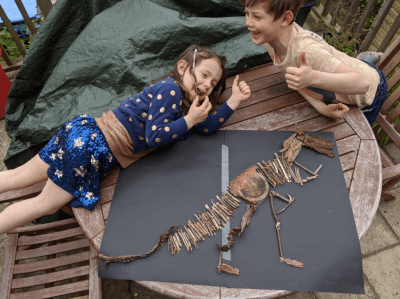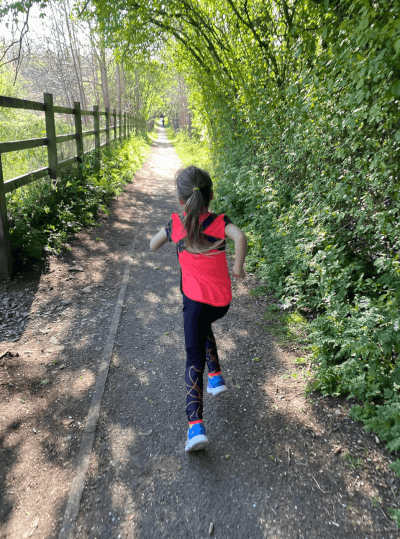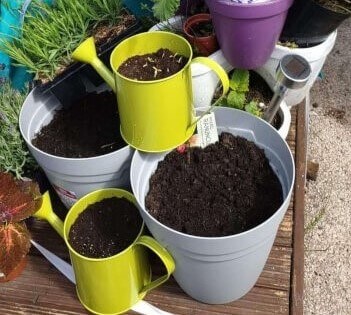Mental Health Awareness Week and the 5 Ways to Wellbeing - 10th to 16th May
A tried and tested way of improving and maintaining good mental health is by following the simple steps set out by the NHS 5 Steps to Wellbeing.
If you're not already familiar with this, you can find out more in the New Economics Foundation's Five Ways to Wellbeing here - the origin of this mental health tool.
The NHS adopted and adapted this in their 5 Steps to Mental Wellbeing, now a widely used mental health support tool and recommended by NHS services across the country.
If you've not already used it, our Reconnect and Recover mental health toolkit gives you age-appropriate activities, based on inspiring pieces of writing, to get children using and implementing the 5 ways in their everyday lives. It's free to all schools (SCARF schools - you have immediate access to this, on the My SCARF menu). And for SCARF schools, your SCARF curriculum also reinforces the principles. Feel free to share this page with parents and carers.
Mental Health Week - Nature activities and the 5 Ways to Wellbeing
The theme of this year's Mental Health Week is Nature.
Here are some suggestions for boosting the mental health of children - and staff - which can be used during Mental Health week, or at any time!
Take these ideas as a starting point for mental health activities that can be done at school or at home.
And remember - Harold the giraffe will be picking up his pen and writing his diary every day of Mental Health awareness week, focusing on how nature has helped us over the last year!
Take Notice
- Listen to and learn to identify different bird song. Use this RSPB bird song identifier to help work out which song goes with which bird.
- Cloud spotting - looking for shapes.
- Patterns in nature.
- Listening to dawn chorus - or even just the birds at any time of day!
- Sit quietly outside and listen for sounds - how many can you hear?
- Growing something and watching it, appreciate.
- Lie on the ground be still and think about what you can feel.
- how many colours can you see?
- Spotting bird formations.
- Pay attention to an insect, watch its journey closely.
- Watch the flow of water and listen to the sound focus on the shapes that the water makes.
- How many different leaf shapes can you see?
- Bark rubbing - feel the bark and take a rubbing
- Woodland bathing - sit in a wooded area, be still and enjoy the sounds, colours and smells.
Get Creative
- Natural art - using objects from nature (blossom, twigs, stones, leaves, sand, shells etc.) to create a design or pattern. Take pictures, to preserve this natural art work!
- Pressing flowers in the traditional way using books or using a microwave for a quicker way to dehydrate the flowers. Create pictures/cards using the flowers (and give to others!)
- Research then design and create a garden/flower bed to attract wildlife (butterflies, bees, birds). This can be a small patch or even pots – the bigger the better for pots, as they take less looking after.
- Sketch or paint outdoors to capture natural landscapes/flowers/birds.
- Listen to and compose music with a natural theme e.g. linked to weather, water, woodland sounds.
- Create bug hotels, hedgehog houses and bird feeding stations to attract wildlife.
- Create a miniature garden on a plate - with gravel, pine cones, succulents, twigs, leaves etc.
- Make a rainmaker by recycling an old plastic bottle and filling it natural objects - pebbles, twigs, gravel etc.
- Create a story stick using elastic bands on a stick and then collect items on a walk through a natural environment in order to retell the adventure.

Be Active
There are so many things that we can do to be active in nature - many have already been mentioned in the sections above.
Here are a few more...
- Nature walk with list of specific things to find (a treasure or scavenger hunt) e.g. a stone that’s not round, feathers of various colours and sizes, blossom, specific shape or colour leaf, something from each colour of the rainbow and/or school colours – record your treasure on digital camera/tablet.
- Allocate play leaders to lead or teach a new outdoor activity during playtimes.
- Challenge the children to make up or adapt a game using natural materials.
- Litter picking/collecting – also a good way of connecting with others!
- Make a hopscotch grid using things from nature - twigs, pebbles etc. and play hopscoth together

Give to Others
- Grow herbs (especially mint) in little pots and give as a small gift to family or community members.
- Be kind to nature (give to wildlife) build a bug hotel, squirrel or bird feeder.
- Litter pick for your community.
- Make daisy chains or weave willow bands to give to friends or family members.
- Share one of your favourite places with someone, explore it with your senses. Take a friend to your favourite place… hopefully somewhere they have never been.
- Choose one of the activities from the Get Creative section – make something to give to a friend or relative!

Connect with Others
- Growing seeds/plants at school or with friends or family.
- Growing a fast growing plants e.g. cress (possibly in egg shell?) and share with family online via Zoom/Facetime. Have some fun by drawing a face on the egg and then cutting crazy cress hairstyles!
- Make picture/collage using natural materials
- Listening game with a partner – how many nature sounds can be heard?
- Birdwatching - or insect watching - with someone.
- Gardening for someone else or a school or community garden/allotment with a group/friend.
- Photograph some nature and make your pictures into a collage for a card send to friend/family.
- Plantlife Survey – take part in this organisation's Cowslip Survey and connect with hunderds of others who care about the environment across UK.
- Listen together to stories and poems about animals, minibeasts, birds - children could suggest their favourite stories about nature to add to the connection.

Not a SCARF school?
If you're not a SCARF school you can try the SCARF resources for six weeks for free. Find out more and sign up here for our free trial, here.

